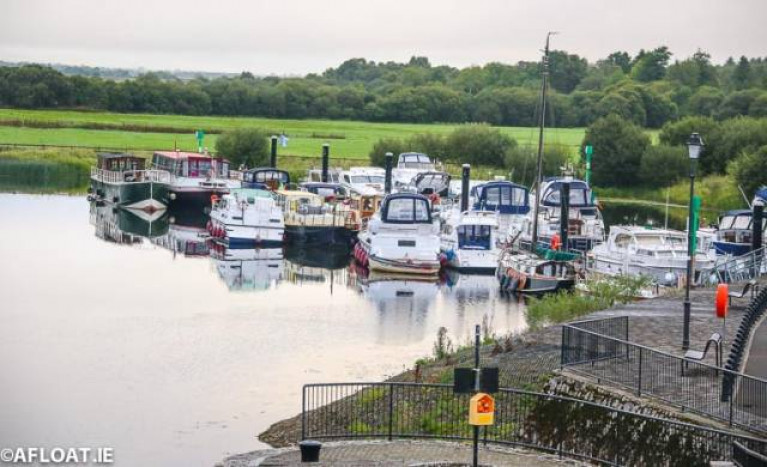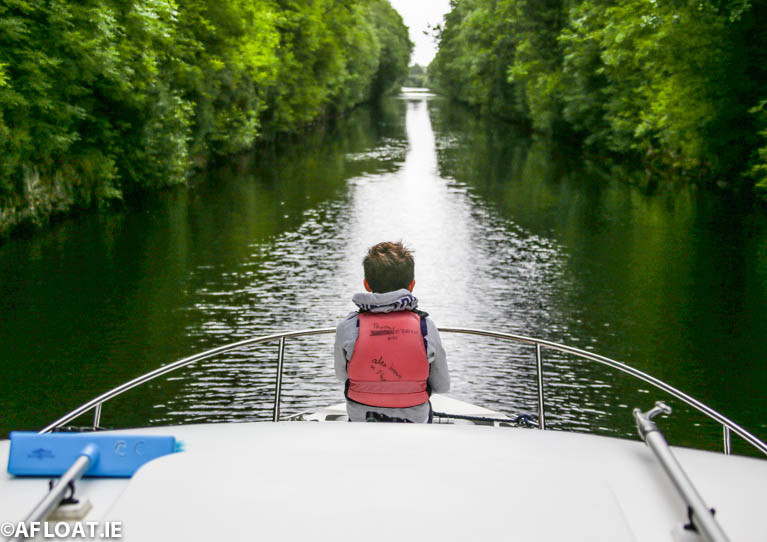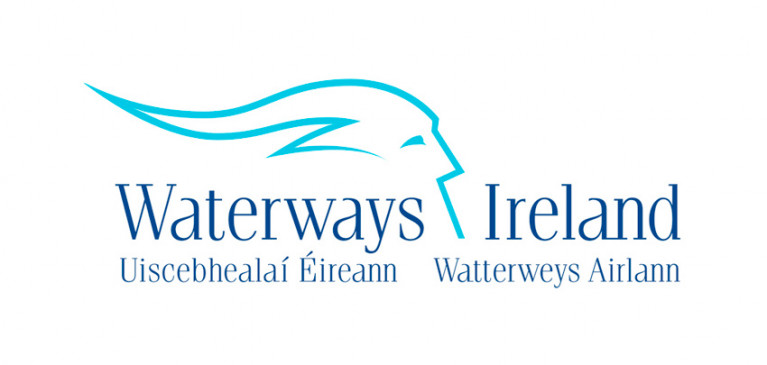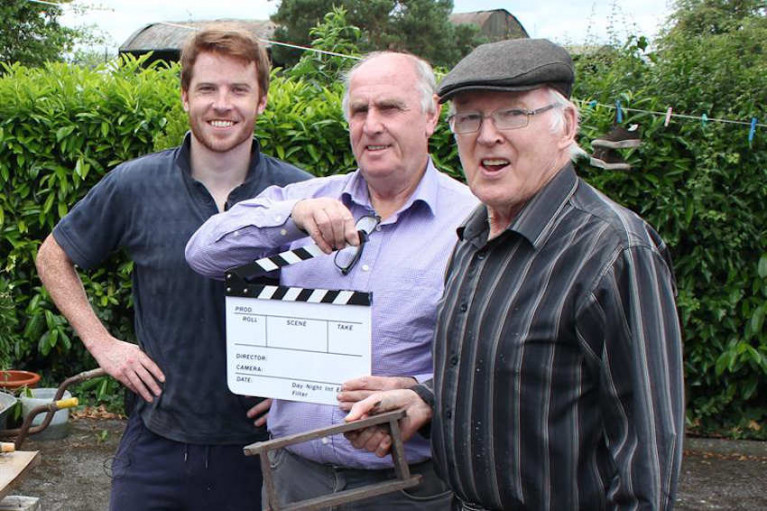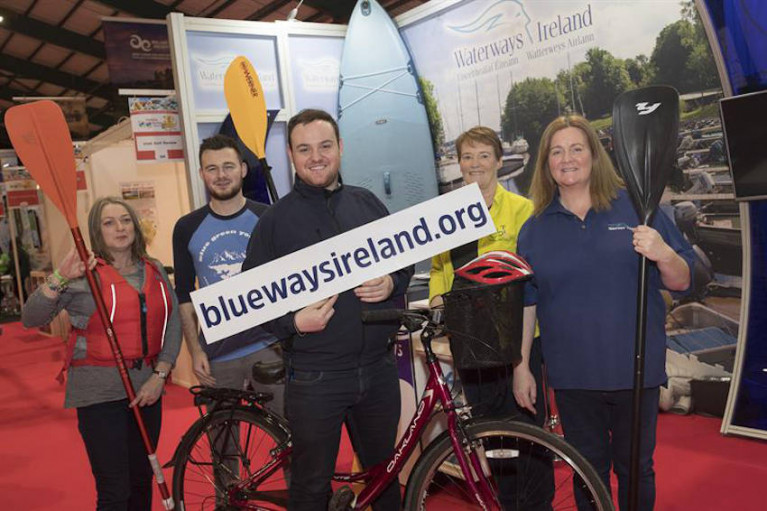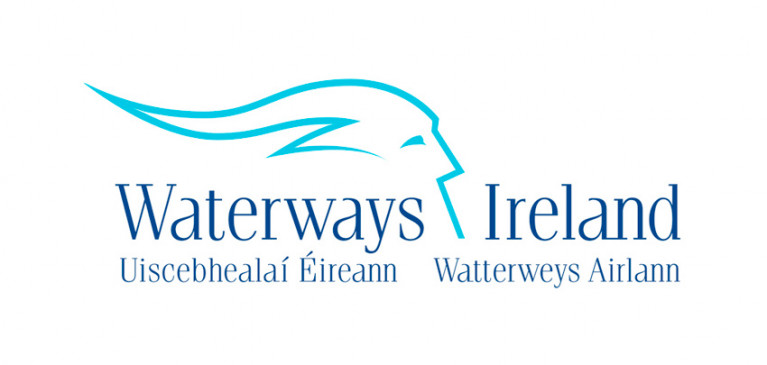Displaying items by tag: Waterways Ireland
No Access To Floating Jetty At Shannonbridge Over High Water Levels
Continued high water levels have prompted Waterways Ireland to prohibit access to the floating jetty in Shannonbridge on the Shannon Navigation.
All masters of vessels and users of the inland waterway are advised that lighting to the area has been turned off as the power supply distribution box is currently submerged.
High Water Level Alert For Shannon, Erne, Barrow & River Bann
Due to recent poor weather conditions, Waterways Ireland is currently operating at increased water levels on the Shannon, Erne, Barrow and River Bann.
As a consequence, boat owners, and those in the vicinity of our waterways, need to take additional care and bear the following points in mind:
- For boaters, air draft is reduced under all bridges and power lines.
- Access to jetties may be difficult as the walkway providing access to the jetty may have elevated due to the increased water levels.
- The markers, pontoons and jetties may be under water.
- The speed at which the water flows has significantly increased and boat owners and those along the navigations should take extra care when travelling.
Waterways Ireland encourages all waterway users to put safety first in these flood conditions.
Previously it was reported that the Jamestown Canal in Roscommon has been closed due to high water levels until further notice.
Waterways Ireland will install a dam system to protect the canal banks here, which will remain in place until water levels drop.
Closure of Jamestown Canal Due to High Water Levels
Waterways Ireland has closed the navigation at Jamestown Canal in County Roscommon until further notice due to high water levels.
Waterways Ireland will be installing a dam system on the upstream side of Corlura bridge in order to control the water levels and to protect the integrity of the canal banks.
This dam system will remain in place until the water levels drop.
This section of navigation will be impassable whilst this dam is in place. Waterways Ireland will remove the dam as soon as the water levels reduce.
Closures On Shannon-Erne Waterway For New Footbridge & Service Block
Waterways Ireland advises masters and owners of vessels that the Shannon-Erne Waterway will be closed between Lock 12 and Lock 13 today, Tuesday 18 February, in order to facilitate the installation of a new footbridge.
It is estimated that the closure of the navigation shall be for no more than one day.
In addition, the service block and amenity area including jetties at Keshcarrigan, Co Leitrim shall remain closed to the public until 16 March in order to facilitate improvement works.
For further information contact, Waterways Ireland’s Carrick-on-Shannon office at 07196-50562.
Details On Canal Passage In & Out Of Dublin For 2020
Waterways Ireland reminds masters and owners of boat passage arrangements in or out of Dublin on the Royal and Grand Canals ahead of the start of the 2020 boating season in mid-March.
Movements in or out of the city via the waterways will be organised by prior arrangement, to take place as a single movement in one day.
Boaters will only be facilitated if their passage is considered to be safe by Waterways Ireland and they have the valid permit(s) for mooring and passage.
In order to plan the necessary lock assistance for movements east of Lock 12 on either canal, masters are required to contact the Waterways Ireland Eastern Regional Office (weekdays 9.30am to 4.30pm) on 01 868 0148 or email [email protected] prior to making passage.
At time of making contact, the following details should be provided:
- Length, beam, water & air drafts of your craft (provide approximates if don't have exact dimensions)
- Phone/email contact details
- Permit number and expiry date of current canal permit
On the Grand Canal, a minimum of two days’ notice prior to planned passage must be given and, with the exception of pre-arranged events, a maximum of two boats per day will be taken through the locks, travelling either east or west. In certain circumstances, eg for slower or larger barges, the limit will be one boat per day.
Due to periodic anti-social activity along some of canal route into Dublin, boat passage will also not be possible in certain weather conditions and at weekends over the late spring and summer period. This can be planned for at time of making contact, and suitable arrangements for passage made.
On the Royal Canal, two weeks’ notice of bridge passage (Newcomen Lifting Bridge) is required for the pre-set lift date, and lock assistance will then also be arranged. A minimum of two boats is required for a bridge lift to go ahead. A maximum number of boats passing will be implemented, 16 for weekend lifts and eight for weekday lifts. Priority will be given on a first come, first served basis.
The pre-set lift dates and times are set out below:
- Thursday 16 April, 11am–1pm
- Sunday 3 May, 9am–1pm
- Saturday 30 May, 9am–1pm
- Thursday 11 June, 11am–1pm
- Friday 26 June, 11am–1pm
- Tuesday 28 July, 11am–1pm
- Tuesday 25 August, 11am–1pm
- Thursday 24 September, 11am–1pm
Masters and owners are also reminded to ensure that they have the following before making the passage through the city locks on both canals. Waterways Ireland reserves the right to postpone passage to another day if all of these are not in place:
- Adequate fuel on board
- Competent and adequate crew to operate the boat and locks (minimum crew of 3)
- A lock key on board their boat
- Mooring lines of adequate length to handle vessel through a lock (approx 15m length)
- No known mechanical problems with their boat
Passages can only be arranged in the boating season from mid-March to end of October. Also note that aquatic weed is generally more prevalent as the season progresses beyond Spring and may hamper passage.
Boaters will be facilitated as far as practicable although Waterways Ireland cannot guarantee that passage will be possible on every planned date. Early contact will greatly assist planning and facilitate the making of the necessary arrangements.
Lock Closures On Shannon Navigation For Staff Training Next Wednesday
Waterways Ireland advises masters and owners of vessels that a number of locks on the Shannon Navigation will be closed next Wednesday 5 February to facilitate staff training.
The affected locks on the inland waterway are in Athlone; Pollboy Lock in Ballinasloe; Victoria Lock at Meelick in Co Galway; Portumna Bridge north of Lough Derg; and Sarsfield Lock in Limerick.
Waterways Ireland regrets any inconvenience this may cause and thanks its customers for their co-operation.
Unsung Waterway Heroes Go For Gold In Prestigious Community Awards
Three projects nominated by Waterways Ireland have been chosen as finalists for this year’s All Ireland Community & Council Awards, presented by IPB Insurance and LAMA, at Croke Park on Saturday 15 February.
Inland waterways finalists in the awards’ 14th year include the Royal Canal Citizen Science Project, which has been selected in the Best Environmental/Ecological Project/Initiative category.
This project is where Waterways Ireland facilitated a change in management, following consultation with a local community group, to support local biodiversity on the Royal Canal at Baltrasna, near Mullingar.
The effect was then monitored by a local environmental group along with Butterfly Conservation Ireland and Birdwatch Ireland.
Elsewhere, Crinniú @ Portumna has been selected as a finalist in Best Arts/Culture (inclucing festivals & events).
This inaugural community-centred heritage event, subtitled ‘a celebration of people, place and heritage’, was a collaboration between Waterways Ireland, Galway County Council Heritage Office and OPW Portumna Castle.
The event received great local support as well as attendance by barges from the Heritage Boat Association.
Stories from the Waterways has been selected as a finalist in Best Connected Council (Communication & Digital Marketing) category.
For this project, Waterways Ireland recorded two series of digital media features. One focused on local communities and their interactions with the waterways, and a second series focused on the work of Waterways Ireland staff in the protection and promotion of waterways heritage.
These digital shorts can be viewed on social media and on the Waterways Ireland website.
Hundreds of leading community organisations from across Ireland entered this year’s awards, which boast over 19 categories.
The main award, the much anticipated Grand Prix title, goes to the project that has received the highest level of recognition from judges.
Last year, the prestigious title went to Louth County Council for their Sports Inclusion Disability Programme. The aspiration of the highly successful programme is to increase and sustain participation for people with disabilities.
Speaking about this year’s finalists, event manager Michael O'Donoghue, said: “We anticipate this year’s event will be bigger and better than ever, with many unsung heroes being recognised for their outstanding contribution to their communities.
“Competition remains high with so many inspiring projects deserving awards.”
Blueways Ireland Launches New Website At Holiday World This Weekend
Blueways Ireland launches its newly upgraded website this weekend during the Holiday World show in the RDS.
The site offers, maps and information on where to stay, eat and the exciting outdoor experiences available on the Shannon Blueway, Lough Derg Blueway and the Shannon-Erne Blueway.
Find inspiration for family-friendly short breaks and more with Blueways Ireland’s partners Waterways Ireland on stand Q7 at Holiday World, which runs until tomorrow, Sunday 26 January.
While there you can meet cruising and activity providers from all over Ireland’s inland waterways and find out more about the newest activities, boats and itineraries for the 2020 season.
What’s more, VR goggles will make it seem like you are really there so you can get a virtual sense of the on the water, by the water experience.
Inspirational packs featuring the best waterway locations for on-the-water fun, food and family time can be picked up on the stand.
And you can enter competitions each day with prizes including glamping, canoe trips, SUP and cycle trips, and discounts on barge hire. Terms and conditions will apply and the winning entries will be pulled at the end of the show.
Waterways Ireland advises users of the Grand Canal in the Cappincur area of Tullamore, Co Offaly of interruption to navigation on the inland waterway in the coming weeks.
Water levels will be reduced and navigation will be closed in order to facilitate lock gate replacement works at Lock No 24 from Monday 27 January to Tuesday 17 March.
The news follows the previous announcement of reduced water levels in the Sallins area on the canal’s Naas Line to facilitate gate replacements works on Lock N1.
Reduced Water Levels On Grand Canal Naas Branch
Waterways Ireland advises users of the Grand Canal that water levels will be reduced in the Sallins area (Level 15 from Killeen Golf Club to Digby Bridge) over the coming weeks.
This in order to facilitate lock gate replacement works at Lock N1 on the Naas Line in Co Kildare.
Works on the waterway began on Tuesday 21 January and will be in progress until to Wednesday 1 April.


























